As photographers, we’re always on the hunt for the next idea to add that extra oomph of creativity to our work. If you’re in a creative rut, or just looking to try something new, sometimes achieving those fresh concepts is as simple as picking up a new prop for your kit.
There’s crystal balls, there’s fairy lights – and today, we’re here to talk about how glass prisms can open a whole new world for you and your photos.
We’ll cover how prisms work (don’t worry, the TLDR), how to use them, the best types of prisms to buy, and top it all off with glass prism photography ideas and examples!
Want more photography and gear tips? Join our mailing list to stay up-to-date! 📮
What is a Photography Prism? And How Does a Glass Prism Work?
A glass prism is in essence, a light refractor!
White light is made up of the colors of the rainbow: red, orange, yellow, green, blue, indigo, and violet – and prisms quite literally show these true colors. You may have seen it on Pink Floyd’s iconic Dark Side of the Moon album cover – simply put, white light goes into prism, colors come out.
So, what does this mean in a photography context?
The refracting (aka bending of light) prisms offer will create unique looks for your photos – letting you project rainbows, reflect your frames, multiply your subjects, blur out distracting background elements, and more! The best part? It’s all in-camera, no editing required.
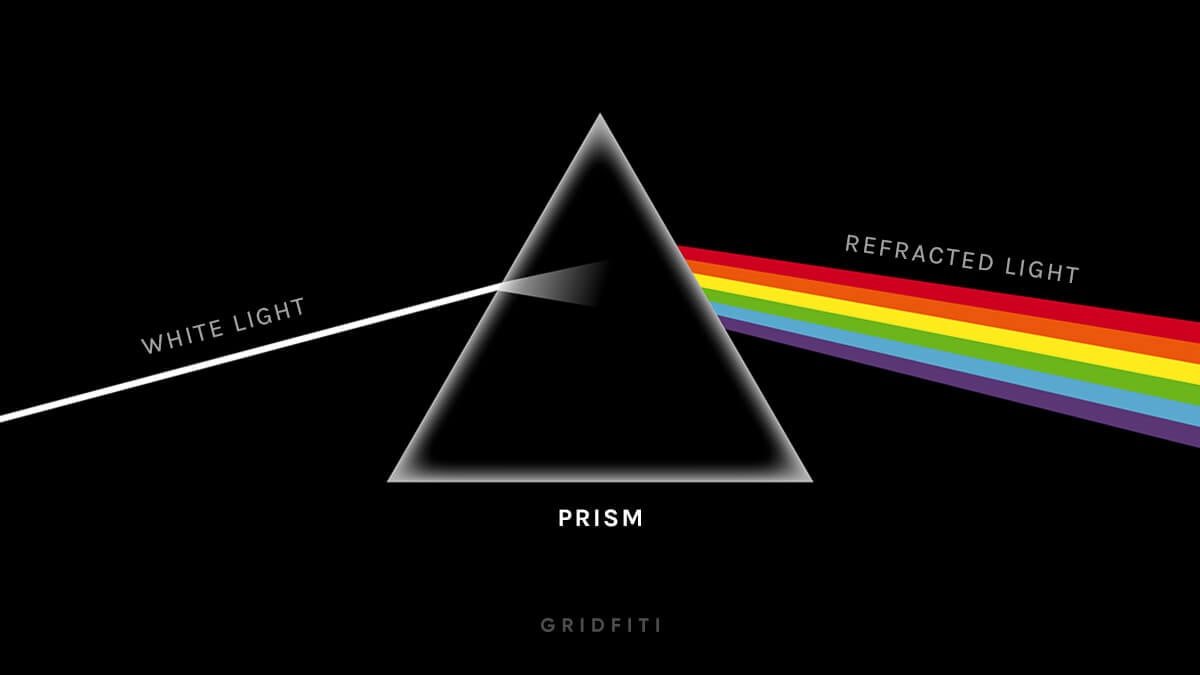
The Best Photography Glass Prisms to Buy
Photography prisms and light refraction tools can be found in all shapes and sizes lately – let’s check them out.
Triangular Photography Prisms
Triangular prisms are the most common of them all. Depending on the size of your lens, the type of look you’re after, and what’s comfortable for you to hold, they’re available in their traditional elongated form, or shorter models at less than half the size.
If you’re looking to get more experimental with your shots, you can even get a full set of different shaped glass prisms, from lens balls to cubes.
When looking for a high quality prism, you want it to be made of glass, and free of bubbles for the cleanest possible images.
Get the triangular prism:
- Long Prism (6″): A&M Film Prism | Optickle Prism | Amlong Prism
- Short Prism (2.5″): Amlong Prism
- Prism Set (Prism, Cube, Ball, Pyramid)
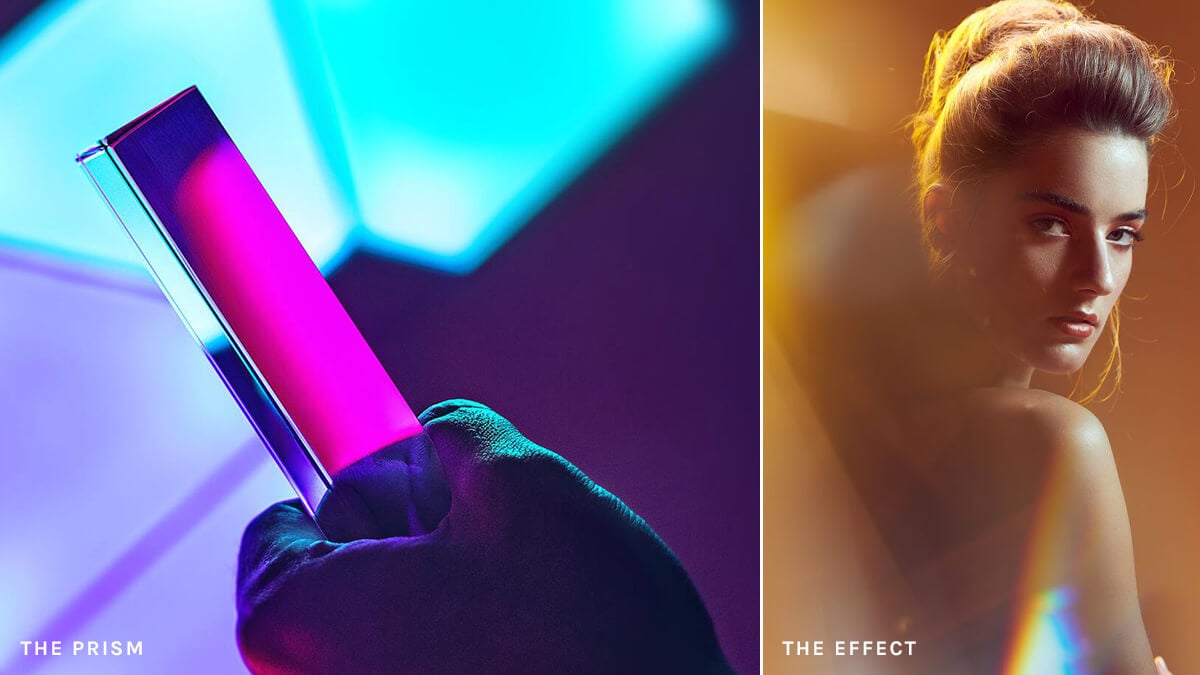 Image #2 by Eley Photo
Image #2 by Eley Photo
Fractal Filter / Kaleidoscope Lens
Created by prism-obsessed photographer Nikk Wong, Fractal Filters open up a whole world of creativity and unique composition for photographers. Thanks to these three high-quality crystal filters, dubbed the Julia, the Penrose, and the Pascal, you can achieve a variety of dreamy effects – most notably the elusive kaleidoscope effect made popular by HBO’s Euphoria.
Get the fractal filter:
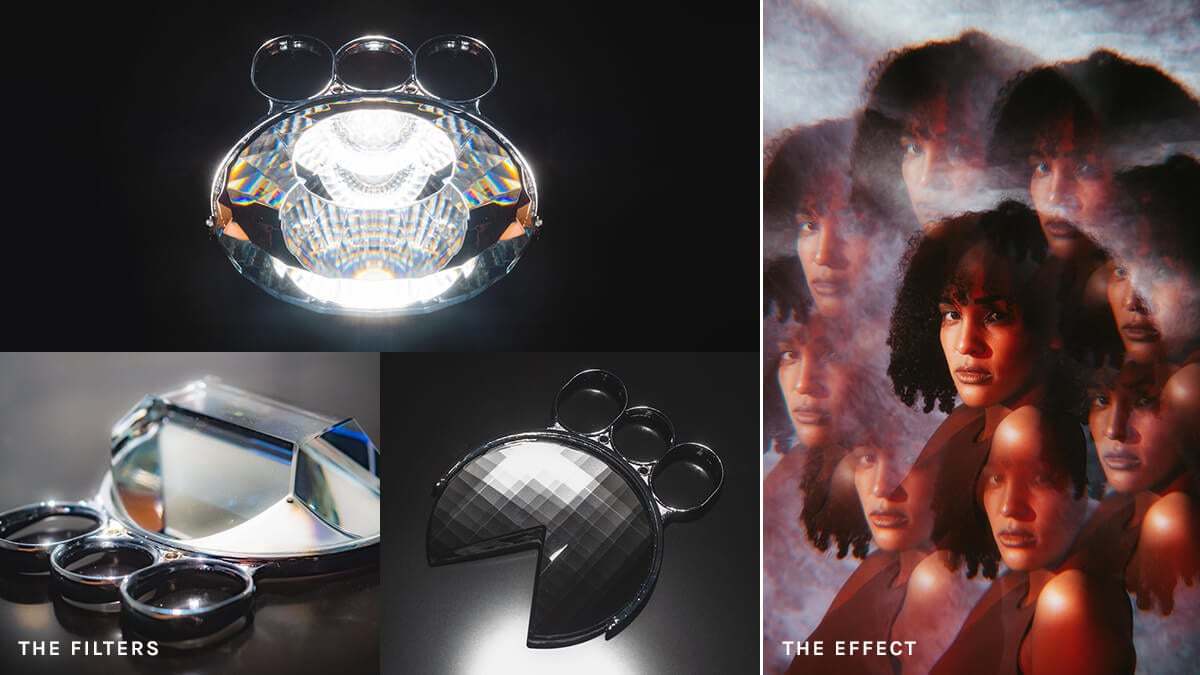 Images by Fractal Filter and Jakob Owens
Images by Fractal Filter and Jakob Owens
Linear Prism Filter
A linear prism filter makes you see double, or several. With this filter, you can multiply your subjects in all directions, and achieve a much more organic look than what you’d otherwise get in Photoshop! Check out the ideas section further down for all the different ways this linear filter can be used.
Get the linear prism filter:
- 77mm Diameter Linear Filter (for 24-70mm, 70-200mm lenses)
 Images by Prism Lens FX & Chvrles
Images by Prism Lens FX & Chvrles
How to Use a Glass Prism for Photography
Get the most out of your triangular prism with these tips and tricks! If you learn better by watching, photographer Dan Bullman runs through prism photography tips in this tutorial.
- To start, simply hold your prism in front of your lens
- Find a source of light to add color to your photos (sunlight, neon, anything!)
- Don’t fully cover the lens with your prism
- Use your viewfinder to preview images as you go
- Experiment with different angles by spinning the prism around
- Adjust aperture to be as low as possible (f-stop of around 2 or lower works best)
- Set focus mode to manual, and use trial and error to achieve the exact effect you want!
Glass Prism Photography Effects & Ideas
Now that we know what prisms are, the different types, and how to use them – let’s get into the best part: ideas and inspo for your own prism photos!
Refract Light for a Colorful Rainbow Effect
Since a prism literally takes white light and refracts it – projecting all the individual hues – one of the most popular ways to use a prism is to project a rainbow! Whether it’s on your portrait subject’s face, or against a still life subject, add some color and energy to your photos with this technique.
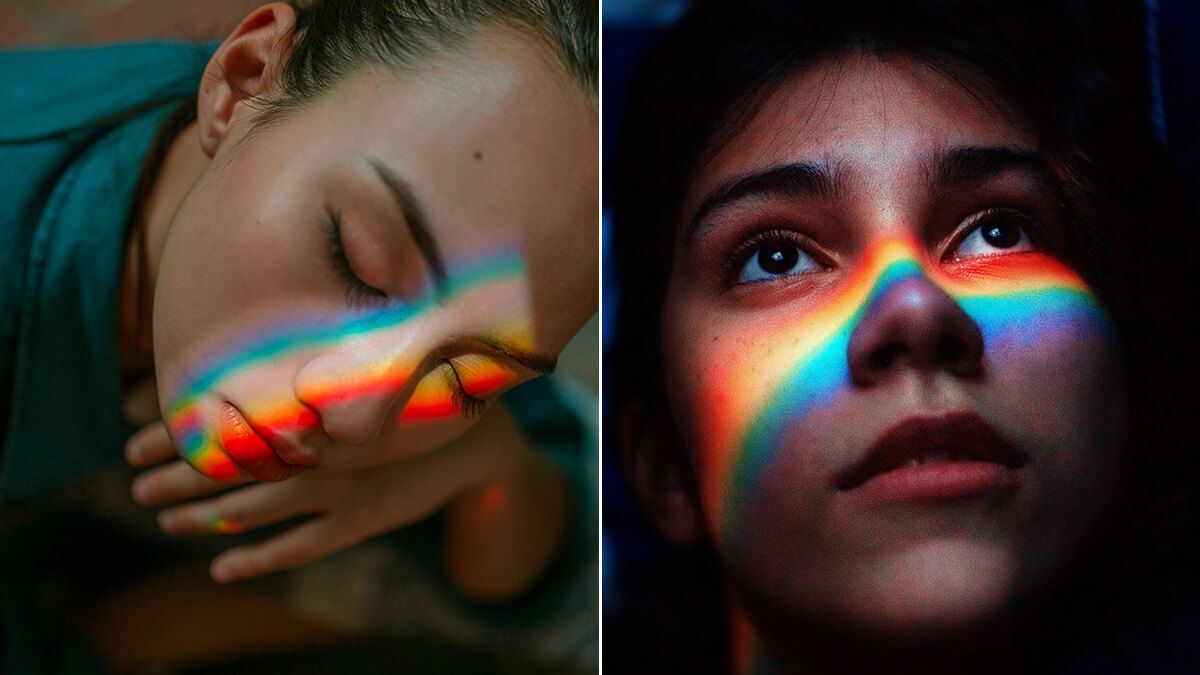 Photos by Audrey Kwok & The Pfayfer Journal
Photos by Audrey Kwok & The Pfayfer Journal
Kaleidoscope “Euphoria” Effect With a Fractal Filter
With the help of a handy fractal filter, you can create an elusive, dreamy, kaleidoscopic world for your portraits. Marina Williams put together a gorgeous Euphoria-inspired shoot thanks to this nifty tool – check out her behind-the-scenes video to get a glimpse into the process!
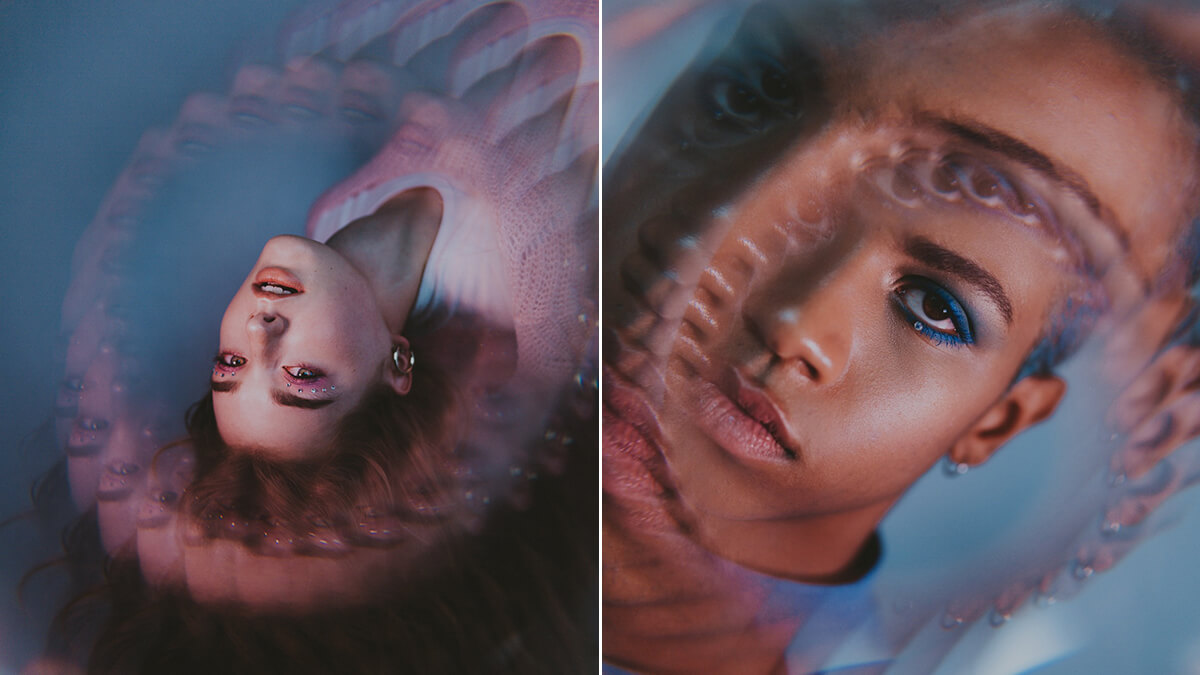 Photos by Marina Williams
Photos by Marina Williams
Create Multiples With a Linear Filter
With linear prism filter’s ability to multiply our your subject, you can capture unique and conceptual shots in-camera like never before. This filter has a ton of flexibility to fit your concept, whether you want your subject to multiply a few times, or several times – or spaced out, or closer together.
This prismatic filter has so much breadth that we had to triple the amount of sample pics we show you!
Linear Prism Filter Available Here
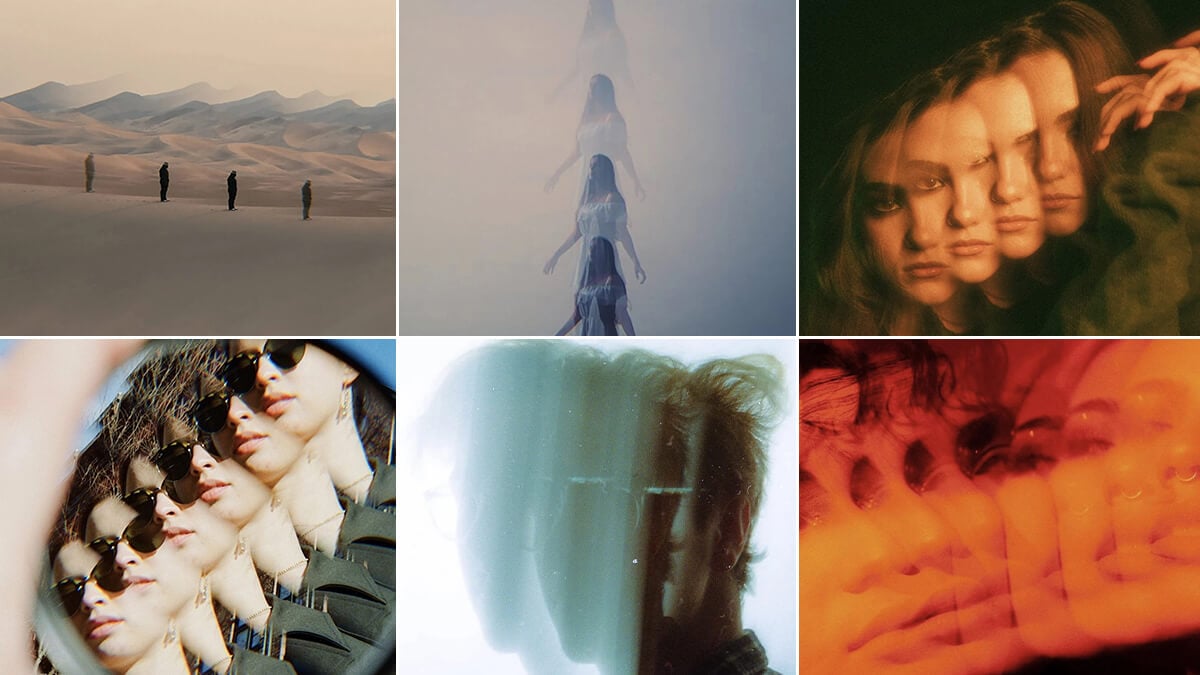 Photos by Linear Prism FX
Photos by Linear Prism FX
Create Reflections & Leading Lines
With a triangular glass prism, you can bend minds and reflect your image in-camera simply by angling the prism a certain way in front of the camera. For this technique to work, you want to have the corner of the prism directly facing your lens, to capture a 45º angle tilting in on both sides of the corner.
A unique, lesser-seen technique for prisms in photography is using these reflections to create leading lines! With prisms’ ability to reflect, use this to your advantage to draw attention to your subject. You can even work in some symmetry, too.
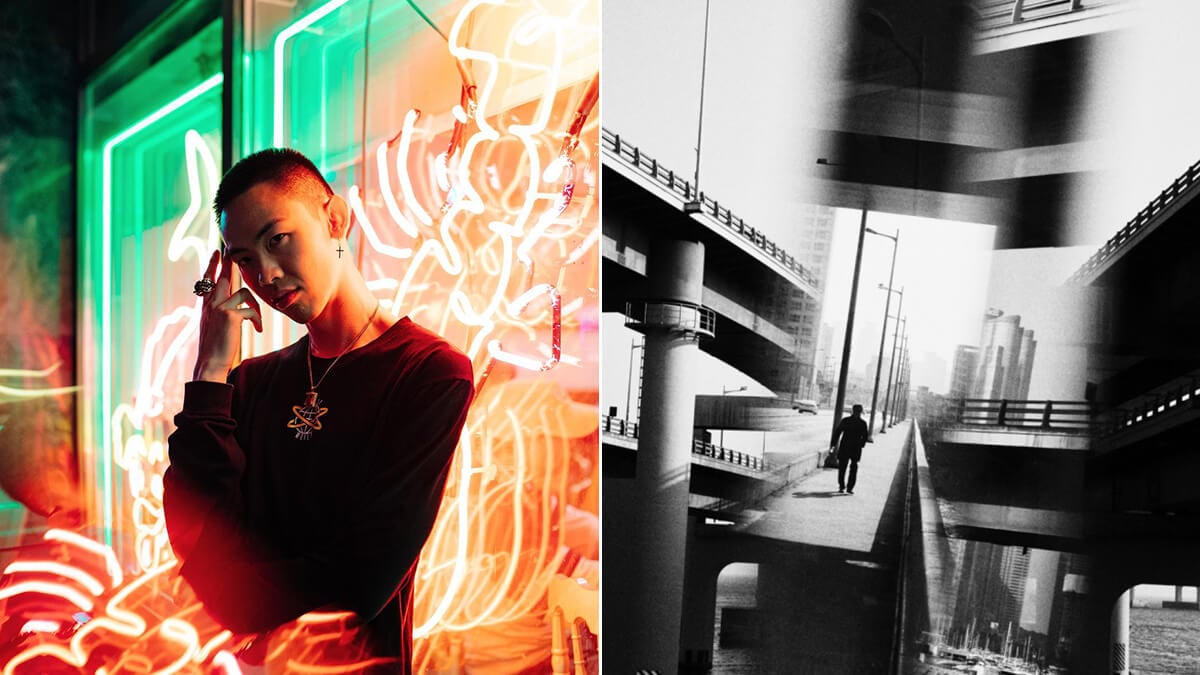 Photo #2 by Digital Photography School
Photo #2 by Digital Photography School
Balance Overexposed Light Source
A prism can also be used to block a source of overexposed lighting. If you’re shooting midday and have harsh lighting directly on your subject from the background, you can use the prism to block or diffuse the light source, balancing out the exposure.
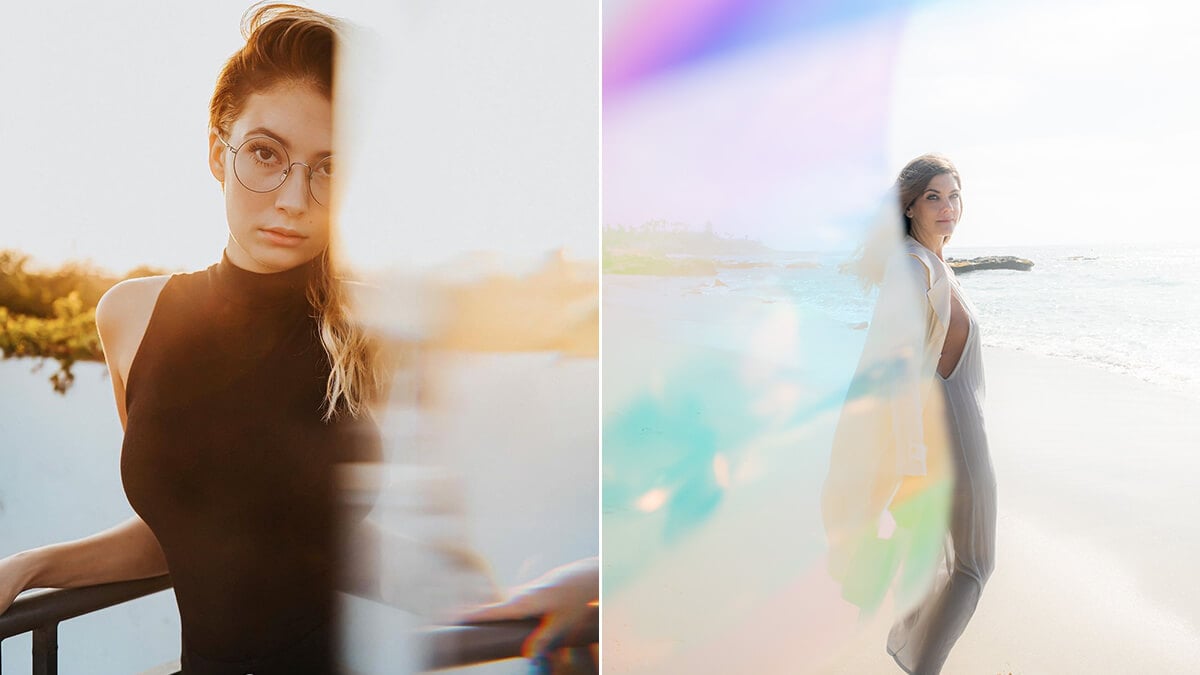 Photos by Shaun Samuels & Stefanie Bales
Photos by Shaun Samuels & Stefanie Bales
In-Camera Creative Video Transition
For the filmmakers here, prisms are great for creative in-camera transitions. From vlog b-roll to wedding films, get that dreamy, starry, refracted look to seamlessly stitch your footage together. Check out this handy tutorial video to see it in action!
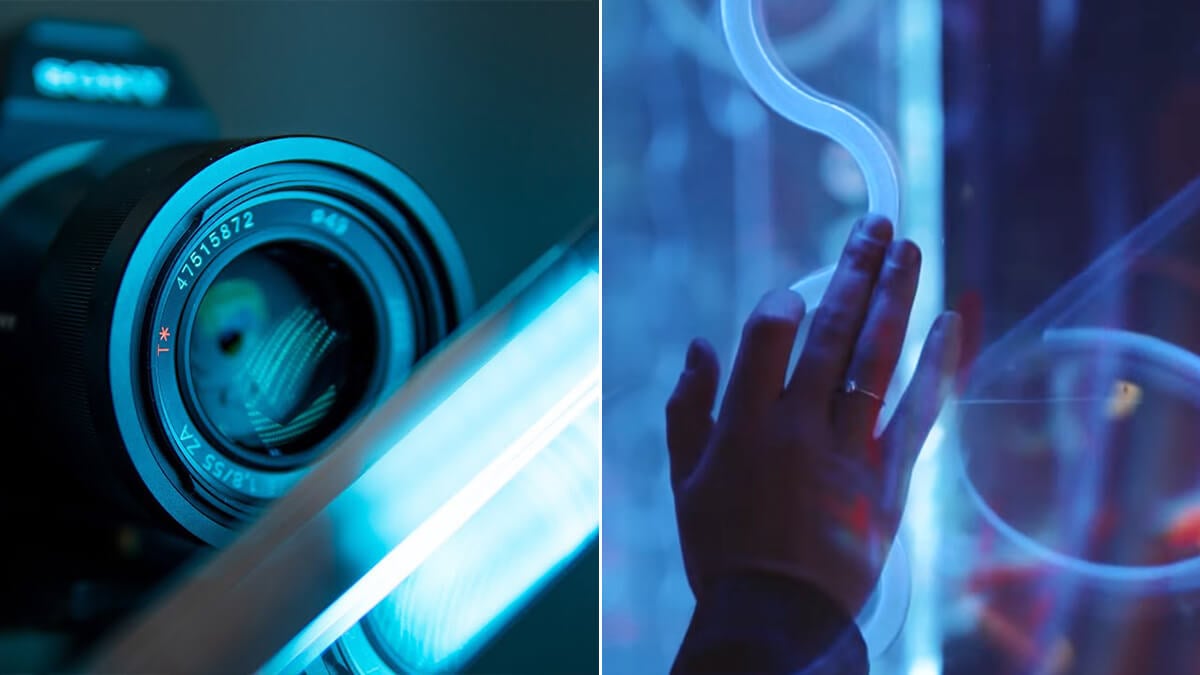 Frames by Tom Richardson on YouTube
Frames by Tom Richardson on YouTube
Minimize Distracting Objects in Shot
Last but not least, an under-utilized prism technique is using it to minimize distracting elements in your frame. Whether you’re shooting in a tree-filled forest, or on a busy sidewalk, the prism can help blur your background for at least half your image – letting you still capture the essence of your setting, without it stealing the show from your subject.
 Photos by Chettara T. Photography & Sarah Ching
Photos by Chettara T. Photography & Sarah Ching
Do you have any other glass prism photography tips? Drop a comment down below! If you’ve got prism photos of your own you want to share, make sure to tag us on Instagram or Twitter @gridfiti.
Gridfiti is supported by its audience – when you buy something using the retail links in our posts, we may earn a small commission at no additional cost to you. We only recommend products we would use ourselves and recommend to our friends and family. Read more about our affiliate disclaimer.